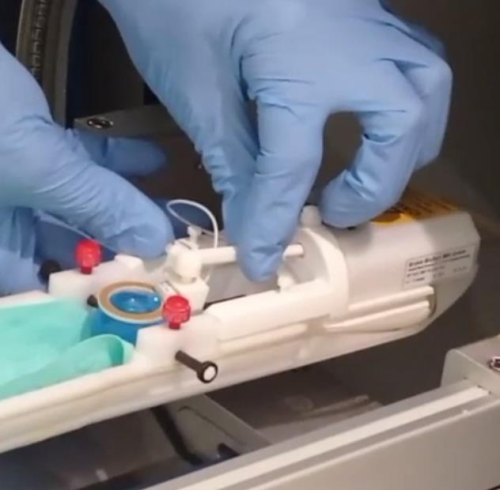CSIC and Miguel Hernández University have developed an articulated device for precise and solid positioning of surface antennas and wires used in nuclear magnetic resonance imaging (MRI). The device improves the reliability and precision of MRI and allows for a total control of the procedure, therefore reducing errors or failures in data collecting and minimizing its possible unwanted effects.
Industrial equipment manufacturers are being sought to collaborate through a patent licence agreement for the industrialization and commercialization of the device.
An offer for Patent Licensing
Accuracy and reliability in MRI analysis
Device mounted in a RMN scanner bed to be used on an imaging phantom in a laboratory test.
The use of MRI in research and preclinical studies requires a solid and precise fixing of the surface antenna over the region of interest for an accurate and trustful data collection. Current positioning and fixing methods do not comply with these requirements, therefore reducing the quality and reliability of the MRI tests.
This new device comprises a mechanical arm that can be fixed to the MRI scanner bed and allows for a fast and accurate positioning of the antenna over the area of interest, maintaining it in a steady position during the whole test and therefore ensuring an adequate and representative data collection.
The device can be adapted to current commercial MRI beds as it can be easily attached and detached. It can also be used simultaneously with other testing/stimulation devices (electrodes, optical wires…), and has a sufficient length to cover any specific region of the sample.
Main innovations and advantages
· Ensures an accurate, steady and replicable positioning of surfaceantennas in samples.
· Reduces notoriously the time and effort required for positioning theantenna in the sample.
· Allows controlling the position of the wire to avoid possibleinterferences.
· Can be used together with other testing devices for simultaneousmonitoring/stimulation or surgical manipulation of the sample.
· Its design ensures a low manufacturing cost and a high industrialscalability.
· Its main application fields include laboratory testing and preclinicalstudies that involve the use of MRI.








